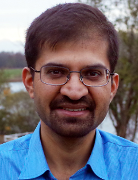The speakers in a few words
Plenary Conferences :
Marie-Paule Besland Institut des Matériaux Jean Rouxel, Université de Nantes
------------------------------------------------------------------------------------------------------------------------------------
Guillaume Cassabois Université de Montpellier (Laboratoire Charles Coulomb)
------------------------------------------------------------------------------------------------------------------------------------
Annie Colin ESPCI Paris
Shear thickening corresponds to an increase of the viscosity as a function of the shear rate. It is observed in many concentrated suspensions in nature and industry: water or oil saturated sediments, crystal-bearing magma, fresh concrete, silica suspensions, cornstarch mixtures. By developing new experimental procedures based on quartz-tuning fork atomic force microscopy, we have measured the pairwise frictional profile between particles suspended in a solvent. We report a clear transition from a low-friction regime, where pairs of particles support a finite normal load, while interacting purely hydrodynamically, to a high-friction regime characterized by hard repulsive contact between the particles and sliding friction. Critically, we show that the normal stress needed to enter the frictional regime at nanoscale matches the critical stress at which shear thickening occurs for macroscopic suspensions. Our experiments bridge nano and macroscales and provide long needed demonstration of the role of frictional forces in discontinuous shear thickening.
------------------------------------------------------------------------------------------------------------------------------------
------------------------------------------------------------------------------------------------------------------------------------
Gilles Patriarche Centre de Nanosciences et de Nanotechnologies (C2N) à Palaiseau
Frederic Pincet laboratoire de physique de l’ENS à Paris
------------------------------------------------------------------------------------------------------------------------------------
Guido Pupillo Laboratoire de physique quantique (ISIS, strasbourg)
------------------------------------------------------------------------------------------------------------------------------------
Marie-Ingrid Richard CEA Grenoble
.
------------------------------------------------------------------------------------------------------------------------------------
Pierre Seneor La spintronique a pour objectif d’apporter et d’explorer de nouvelles solutions pour l’électronique basse consommation de demain en se concentrant sur la recherche, la compréhension et l’exploitation de nouveau mécanismes physiques au-delà de ceux habituellement disponibles. Elle a récemment été mise en avant pour une nouvelle génération de mémoires ultrarapides et efficaces (MRAM...) mais aussi pour ses approches post-CMOS (logique de spin, calcul stochastique, neuromorphique et quantique…). Très récemment un domaine de recherche en plein essor à la frontière entre spintronique, matériaux 2D et systèmes moléculaires a ouvert des perspectives nouvelles, passionnantes et inattendues en termes de fonctionnalités et de performances pour les dispositifs spintroniques.
Pierre Seneor est professeur à l'Université Paris-Saclay et chercheur à l’Unité Mixte de Physique CNRS/Thales. Après avoir obtenu son doctorat de l'Ecole Polytechnique sous la direction de A. Fert, en 2000, il a ensuite effectué un post-doc au California Institute of Technology (Caltech) avant de revenir en France à l’Unité Mixte de Physique CNRS/Thales et au département de physique de l’université Paris-Sud (maintenant Paris-Saclay) ou il est depuis 2003. Il a été membre de l‘Institut Universitaire de France. Il s’intéresse principalement aux propriétés exotiques du transport électronique et de spin en basse dimensionnalité : systèmes à électron unique, moléculaires, matériaux 2D…
------------------------------------------------------------------------------------------------------------------------------------
Semi plenary conferences :
------------------------------------------------------------------------------------------------------------------------------------
------------------------------------------------------------------------------------------------------------------------------------
------------------------------------------------------------------------------------------------------------------------------------
Luca Costa Centre de Biologie Structurale de Montpellier
------------------------------------------------------------------------------------------------------------------------------------ Julien Dervaux est physicien de la matière molle au Laboratoire Matière et Systèmes Complexes à l'Université de Paris. Au sein de l'équipe Dynamique des Systèmes Hors d'Equilibre, il s'intéresse plus particulièrement aux mouvements collectifs dans les suspensions de micro-organismes photosynthétiques tels que les algues ou les cyanobactéries. Il travaille également sur la mécanique des milieux élastiques, vivants ou synthétiques, et en particulier sur les interactions entre gouttes liquides et matériaux hautement déformables.
------------------------------------------------------------------------------------------------------------------------------------ Fabrice Gerbier Laboratoire Kastler Brossel
The research work of Fabrice Gerbier investigates the properties of quantum matter using dilute gases of ultracold atoms. Progress in atomic physics and quantum optics enabled to produce samples of such gases very close to the absolute zero temperature (in a temperature scale ranging roughly from the nano- to the microKelvin), where their properties are collective and dominated by the interplay between interactions and quantum statistics. Fabrice Gerbier carried out his PhD at Institut d'Optique in Palaiseau (now IO-GS) under the supervision of Alain Aspect and Philippe Bouyer. He investigated the thermodynamic properties of ultracold Bose gases and the emergence of phase fluctuations in a quasi-one-dimensional geometry. After defending his PhD in 2003, he joined the group of Immanuel Bloch at the university of Mainz (now LMU/MPQ in Munich) to explore various aspects of the superfluid-Mott insulator transition observed in optical lattices, periodic arrays of traps mimicking for neutral atoms the periodic ionic potential felt by electrons in solids. Since 2005, he is a permanent researcher at CNRS and has worked in the Bose-Einstein condensates group at Laboratoire Kastler Brossel. At LKB, FG is involved in two experimental projects. The first project (with Jean Dalibard) uses sodium atoms to study antiferromagnetic spinor condensates and to generate entangled states of many atoms. The second project (initiated with Jérôme Beugnon and also involving Raphaël Lopes) uses laser-dressed gases of ytterbium atoms in optical lattices and aims to emulate various types of quantum matter, e.g. to realize synthetic orbital magnetism or strongly-correlated quantum Hall systems.
------------------------------------------------------------------------------------------------------------------------------------
Jacky Even is Professor at INSA Rennes engineering school since 1999. He received a PhD in Physics from the University of Paris VI in 1992. He was assistant professor at the Physics Department of Rennes University. In 1999, he created FOTON’s (UMR 6082) simulation team at INSA, to study semiconductors from the atomistic level to optoelectronic devices, initially for optical telecommunications and later on for silicon photonics.
Understanding the physical properties of hybrid and all-inorganic metal-halide perovskites is his major theme since 2010, jointly developped with CTI/ISCR (UMR 6226) in Rennes and laboratories in US. Those materials have recently demonstrated great potential for low-cost optoelectronic technologies, including light emitting and photovoltaic devices, raising in turn many fundamental issues in Physics and Materials Science. Among those, this class of materials offers innate heterostructures and low-dimensional nanostructures with great structural and chemical versatility, i.e. a natural playground to investigate effect of dielectric and quantum confinements.
------------------------------------------------------------------------------------------------------------------------------------
Walter Kob Laboratoire Charles Coulomb, Montpellier
Walter Kob received his PhD in 1989 in theoretical Physics at the University of Basel (Switzerland). After a postdoc at the Department of Chemistry at Stanford University, he became in 1994 an assistant professor at the Department of Physics at the University of Mainz in Germany. In 2000 he accepted a full professorship at the University of Montpellier, France. There he became the head of the Laboratoire des Verres and subsequently of the Laboratoire des Colloides, Verres, et Nanomateriaux.
------------------------------------------------------------------------------------------------------------------------------------
------------------------------------------------------------------------------------------------------------------------------------
------------------------------------------------------------------------------------------------------------------------------------
------------------------------------------------------------------------------------------------------------------------------------
Alaska Subedi is a theorist who uses first principles calculations to understand how the physical properties of materials arise out of their structure and chemistry. He has contributed to the understanding of the electronic properties of the iron superconductors and rare-earth nickelates. Recently he proposed a mechanism for light-control of ferroelectrics using midinfrared laser pulses. He has been a CNRS researcher since 2017. |
| Online user: 2 | Privacy |

|
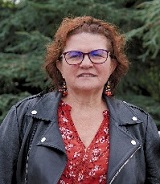
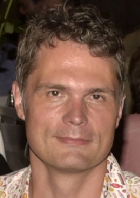
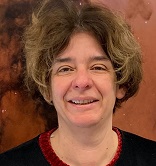

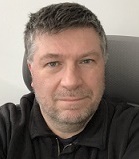
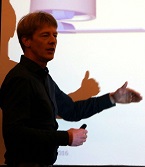
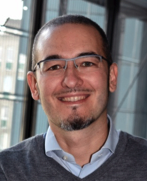

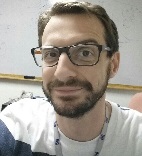
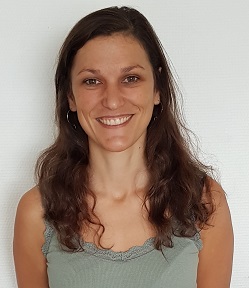

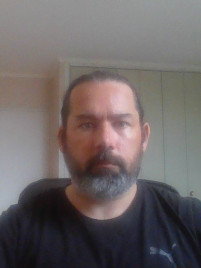
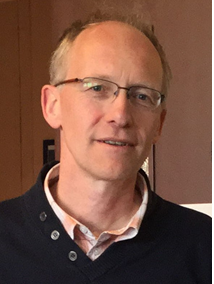
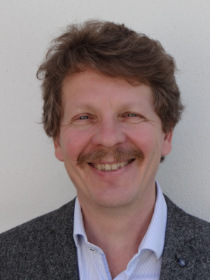
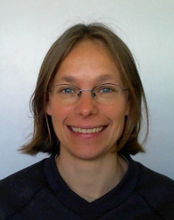
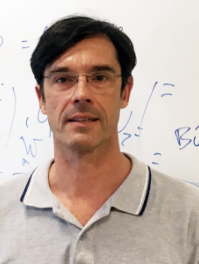
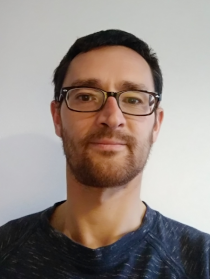 .
.